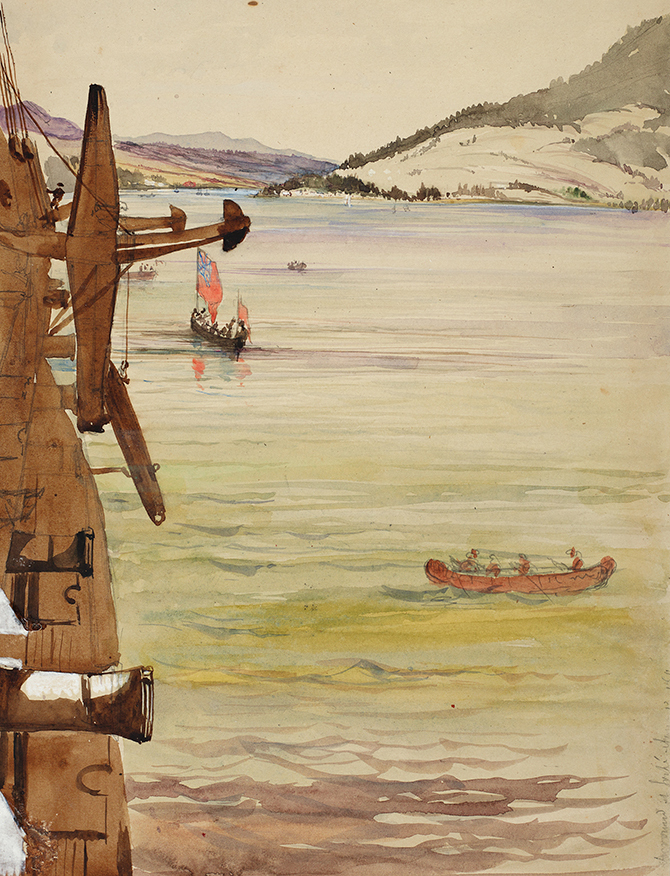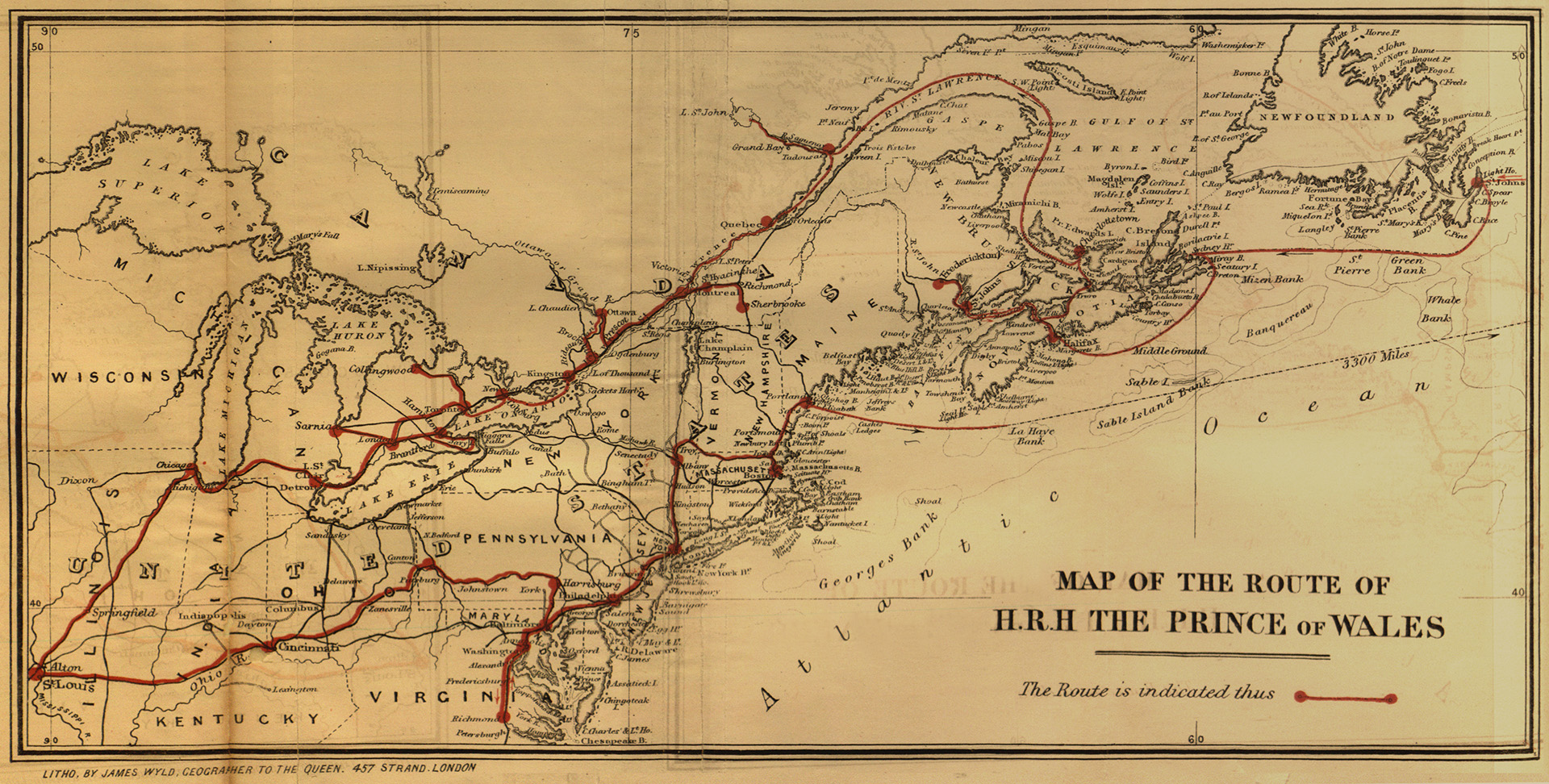
A digital book edited by Jane Rupert
Dr Henry Wentworth Acland wrote engaging letters to his beloved wife, Sarah, pictured above in the family photo, while physician to the Prince of Wales during his tour of the four Atlantic colonies and the united Canadas in 1860.
Accompanied by his own sketches and watercolours, the letters of this intelligent, scientific, and artistic man, who was Regius Professor of Medicine at Oxford and Oxford’s most distinguished physician, draw us into mid-nineteenth-century life in British North America just seven years before Confederation. As we follow his travels in the company of the period’s most eminent politicians to all the capitals and major towns and cities from St John’s, Nfld, to Niagara Falls, the modern reader will be intrigued by his first-hand account of a vibrant period of transition: in imperial relations with the colonies and indigenous peoples; in science and medicine; trade and transport; education and religion.
Through the voice of Dr Acland, man of science, Oxford professor of medicine, and affable companion on the royal tour of the British North American Colonies in 1860, I was drawn into the texture of life in the colonies in 1860 and to an exploration of the context of the letters.
Contextualization of the Letters
Acland’s sketches, paintings, and passages within the letters are linked to editor Jane Rupert’s notes that animate the broader context of his far-ranging observations. For example, his visit to the magnetic observatory in Toronto is framed within the context of the coming of age of the sciences as a modern global enterprise. His judgments on lunatic asylums in the Atlantic colonies and Quebec are placed within the context of the period’s new ideal of possible cure through therapy. Rupert’s contextualized notes are also used to identify and portray the many people Acland encountered: the Indigenous people in his portraits, lumber barons, scientists, educators, producers of cod liver oil, mining agents and lieutenant governors.

Aground at Gaspé Read Letter Six
How to use this website
This website is best viewed on devices with screen widths of 981 pixels or higher.
Access to contextualization: All Acland’s letters are enhanced by notes. To access the notes, look for light-blue highlights within the letters and click on the hyperlinked number.
Illustrations: All illustrations have additional captions. Click on the light-blue icon below each illustration for access.
Menus: At the beginning of each letter, left-column menus help users navigate letter and page content (at screen widths of 981 pixels or higher). Similarly, in the right-hand column a menu lists contextualized notes (on all devices except phones).
Acland’s Letters: Excerpts & Contextualized Notes
Letter One: Transatlantic Voyage
Acland’s deep love of the sea and esteem for the royal navy prompted his observations on navigational practices.
From the letter:
“We had an alarm yesterday of icebergs – The water is tested for temperature every half hour. It suddenly fell from 58 to 51 – and the outer air from 60 to 52 Fahrenheit. We slackened speed for 3 hours. It blew keen and frosty – but we saw nothing.”
Contextualized:
Acland refers to the cannon fired by the window of his cabin alerting the Hero’s companion ship of its position to avoid collision in dense fog. He describes the use of the steam whistle for the echo location of icebergs and the monitoring of air and water temperatures to determine their proximity….
Letter Two: Newfoundland
A physician familiar with the categories of mental disease and an advocate of the radical modern ideal of therapy, Acland visited the asylum near St John’s.
From the letter:
“The Lunatic Asylum is three miles from the Town, a neat brick building….small in its dimensions but otherwise well arranged & well kept….There is no supply of books, or fund for amusement of the Inmates.”
Contextualized:
When the St John’s asylum opened in 1854, inmates were treated in accordance with the revolutionary theory of moral therapy…advocated during the 1790s particularly by Philippe Pinel, a French physician…..the goodness of the practitioner and his sympathy with those suffering were considered essential…..
Letter Twelve: Niagara Falls
In Toronto, Acland reported the words of Oronhyatekha, a young, educated Mohawk, from their conversation as he painted his portrait.
From the letter:
“The great draw-back which any Indian of real cultivation finds is that he is looked upon by the white men as an inferior being – Those even who are appointed by your Government to care for us look on us as children – and treat us so.”
Contextualized:
During the conversation, Oronhyatekha countered the Indian Department’s two options for First Nations peoples: either segregation or assimilation. Oronhyatekha asserted a third option: acculturation and integration into mainstream society as Indigenous people.


